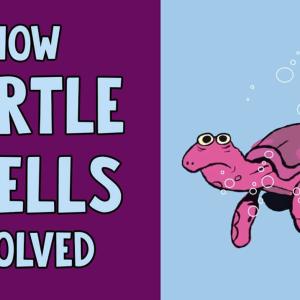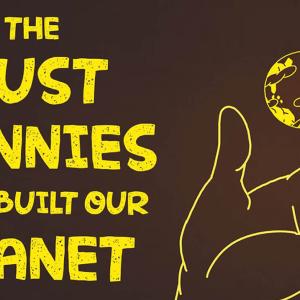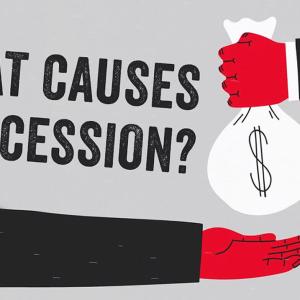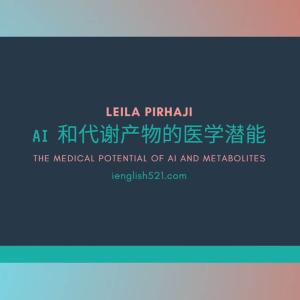
现在已经是时候采取地球规模的干预手段来应对气候变化了。环保主义者蒂姆·弗兰纳里(Tim Flannery)认为海藻可以帮助我们。在这个大胆的演讲中,他分享了海藻巨大的碳捕捉能力,解释了大规模的远洋海藻养殖如何捕获我们释放到大气中的碳。观看演讲,了解更多这个可能会拯救地球的方案——以及在实现这个方案前所要做的工作。
Oh, there's a lot of it. This is seaweed. It's pretty humble stuff. But it does have some remarkable qualities. For one, it grows really fast. So the carbon that is part of that seaweed, just a few weeks ago, was floating in the atmosphere as atmospheric CO2, driving all the adverse consequences of climate change. For the moment, it's locked safely away in the seaweed, but when that seaweed rots -- and by the smell of it, it's not far away -- when it rots, that CO2 will be released back to the atmosphere. Wouldn't it be fantastic if we could find a way of keeping that CO2 locked up long-term, and thereby significantly contributing to solving the climate problem? 文章源自:力哥爱英语(ienglish521.com)力哥爱英语-https://ienglish521.com/3002.html
哦,这里有很多这个东西。是海藻。这是很不起眼的东西。但是它确实有一些了不起的特质。其中一个就是,它们生长得非常快。仅在几周前,海藻中的一部分,碳,以大气层中二氧化碳的形态正漂浮在大气中,造成了气候变化中的那些不良后果。而此时此刻,碳被安全的锁在海藻中,但是当海藻腐烂时——而且闻起来,它离腐烂不远了——当它腐烂时,二氧化碳会被释放回大气层。如果我们能够找到一种方法可以长期把二氧化碳锁住,从而为解决气候问题做出重大贡献,这样岂不是棒极了?文章源自:力哥爱英语(ienglish521.com)力哥爱英语-https://ienglish521.com/3002.html
What I'm talking about here is drawdown. It's now become the other half of the climate challenge. And that's because we have delayed so long, in terms of addressing climate change, that we now have to do two very big and very difficult things at once. We have to cut our emissions and clean our energy supply at the same time that we draw significant volumes of carbon dioxide out of the atmosphere. If we don't do that, about 25 percent of the CO2 we put in the air will remain there, by human standards, forever. So we have to act. 文章源自:力哥爱英语(ienglish521.com)力哥爱英语-https://ienglish521.com/3002.html
我现在所说的是吸收。现在它变成了气候挑战的另一部分。是因为我们已经在解决气候变化的问题上拖延了太久了。所以我们现在不得不同时面对两件非常重大而艰难的问题。我们要减少排放,清洁我们的能源供应,同时要大量吸收大气层中的二氧化碳。如果我们不这样做,我们排入到空气中的二氧化碳按照人类的标准,有大约25%会永远留在那。所以我们必须行动起来。文章源自:力哥爱英语(ienglish521.com)力哥爱英语-https://ienglish521.com/3002.html
This is really a new phase in addressing the climate crisis and it demands new thinking. So, ideas like carbon offsets really don't make sense in the modern era. You know, when you offset something, you say, "I'll permit myself to put some greenhouse gas into the atmosphere, but then I'll offset it by drawing it down." When you've got to both cut your emissions and draw down CO2, that thinking doesn't make sense anymore. And when we're talking about drawdown, we're talking about putting large volumes of greenhouses gases, particularly CO2, out of circulation. And to do that, we need a carbon price. We need a significant price that we'll pay for that service that we'll all benefit from. 文章源自:力哥爱英语(ienglish521.com)力哥爱英语-https://ienglish521.com/3002.html
这真的是解决气候危机的一个新的阶段,我们需要有新的思路。所以,像碳抵消这种想法,在当今时代并没有什么意义。当你们选择抵消,你会说,“我会允许自己向大气层中排放温室气体,而之后我会通过吸收它来抵消掉。”当你可以既减少排放量又吸收二氧化碳,之前那种想法不再有意义。而当我们讨论吸收,我们说的是要将大量的温室气体,尤其是二氧化碳移出大气循环。而要做这个,我们需要为碳定价。我们需要很高的价格来支付为我们提供福利的这项服务。文章源自:力哥爱英语(ienglish521.com)力哥爱英语-https://ienglish521.com/3002.html
We've made almost no progress so far with the second half of the climate challenge. It's not on most people's radar. And, you know, I must say, at times, I hear people saying, "I've lost hope that we can do anything about the climate crisis." And look, I've had my sleepless nights too, I can tell you. But I'm here today as an ambassador for this humble weed, seaweed. I think it has the potential to be a big part of addressing the challenge of climate change and a big part of our future. 文章源自:力哥爱英语(ienglish521.com)力哥爱英语-https://ienglish521.com/3002.html
至今我们对于气候问题的第二部分基本上没有一点进展。这不在大多数人的关注范围内。而且我必须说,有时候,我听见人们说,“我对我们能为气候危机所做的已经失去希望了。”而且我可以告诉你们,我已经失眠了好几夜了。但是今天我的身份是这个不起眼的海藻的大使。我觉得它有潜力成为解决气候变化问题的一个重大部分,也会是我们未来的一个重要部分。文章源自:力哥爱英语(ienglish521.com)力哥爱英语-https://ienglish521.com/3002.html
Now, what the scientists are telling us we need to do over the next 80-odd years to the end of this century, is to cut our greenhouse gas emissions by three percent every year, and draw three gigatons of CO2 out of the atmosphere every year. Those numbers are so large that they baffle us. But that's what the scientists tell us we need to do. I really hate showing this graph, but I'm sorry, I have to do it. It is very eloquent in terms of telling the story of my personal failure in terms of all the advocacy I've done in climate change work and in fact, our collective failure to address climate change. You can see our trajectory there in terms of warming and greenhouse gas concentrations. You can see all of the great scientific announcements that we've made, saying how much danger we face with climate change. You can see the political meetings. None of it has changed the trajectory. And this is why we need new thinking, we need a new approach. 文章源自:力哥爱英语(ienglish521.com)力哥爱英语-https://ienglish521.com/3002.html
科学家们告诉我们,我们需要在接下来的80年,直到本世纪结束,每年减少3%温室气体的排放,而且每年吸收大气层中三十亿吨的二氧化碳。这些数字太大了,让我们无所适从。但是这是科学家告诉我们要去做的。我非常讨厌展示这个图片,但是对不起,我不得不给大家看。它对于讲述关于我在气候变化问题的支持工作中的失败故事是非常有说服力的,实际上,是我们集体的失败。你们可以在这看见我们对于气候变暖和温室气体浓度问题的行动轨迹。可以看见我们做的所有的科学公告,解释我们面临的气候变化有多么危险。可以看见我们的政治会议。没有任何东西改变我们的轨迹。这就是为什么我们需要新的思路,我们需要一个新的途径。文章源自:力哥爱英语(ienglish521.com)力哥爱英语-https://ienglish521.com/3002.html
So how might we go about drawing down greenhouse gases at a large scale? There's really only two ways of doing it, and I've done a very deep dive into drawdown. And I'll preempt my -- And I would say this stuff comes up smelling like roses at the end of the day. It does, it's one of the best options, but there are many, many possibilities. There are chemical pathways and biological pathways. So two ways, really, of getting the job done. 文章源自:力哥爱英语(ienglish521.com)力哥爱英语-https://ienglish521.com/3002.html
那么我们如何大幅度吸收掉温室气体呢?这其实只有两条道路,而且我已经深入研究过吸收这个方法了。我会先发制人——我要说这个东西最终会闻起来像玫瑰。它确实是最好的一个选项。但是也有其他很多,很多可能性。两种方法分别是化学途径和生物途径。两者都可以达到目的。文章源自:力哥爱英语(ienglish521.com)力哥爱英语-https://ienglish521.com/3002.html
The biological pathways are fantastic because the energy source that's needed to drive them, the sun, is effectively free. We use the sun to drive photosynthesis in plants, break apart that CO2 and capture the carbon. There are also chemical pathways. They sound ominous, but actually, they're not bad at all. The difficulty they face is that we have to actually pay for the energy that's required to do the job or pay to facilitate that energy. Direct air capture is a great example of a chemical pathway, and people are using that right now to take CO2 out of the atmosphere and manufacture biofuels or manufacture plastics. Great progress is being made, but it will be many decades before those chemical pathways are drawing down a gigaton of CO2 a year. 文章源自:力哥爱英语(ienglish521.com)力哥爱英语-https://ienglish521.com/3002.html
生物途径是很棒的,因为需要驱动它们的能量来源,太阳,实际上是免费的。我们用太阳来带动植物的光合作用,分解二氧化碳,捕捉碳元素。然后还有化学途径。听起来不太妙,但是实际上,它们一点也不糟糕。大家面对的难处是我们不得不为工作所需的能源花钱或者为让那些能源更方便易得花钱。直接的空气捕捉是化学途径的一个好例子。人们正在用这种方式将二氧化碳从大气中,制造生物燃料或制造塑料的过程中搜集起来。人们已经有了很大的进展,但是要实现通过化学途径一年降低10亿吨二氧化碳,还要等上好几十年。文章源自:力哥爱英语(ienglish521.com)力哥爱英语-https://ienglish521.com/3002.html
The biological pathways offer us a lot more hope, I think, in the short term. You've probably heard about reforestation, planting trees, as a solution to the climate problem. You know, it's a fair question: Can we plant our way out of this problem by using trees? I'm skeptical about that for a number of reasons. One is just the scale of the problem. All trees start as seeds, little tiny things, and it's many decades before they've reached their full carbon-capture potential. And secondly, if you look at the land surface, you see that it's so heavily utilized. We get our food from it, we get our forestry products from it, biodiversity protection and water and everything else. To expect that we'll find enough space to deal with this problem, I think is going to be quite problematic. 文章源自:力哥爱英语(ienglish521.com)力哥爱英语-https://ienglish521.com/3002.html
我认为,生物途径在短期内会给我们更多希望。你们可能听过把造林,植树作为气候问题的解决方法。这是一个合理的疑问:我们能只通过种树来解决问题吗?由于多种原因,我对此表示怀疑。其中之一就是这个问题的规模。所有树都是从非常小的种子开始,在它们获得充分捕捉碳的能力前需要好几十年。第二点,如果看看地表,会发现它的使用率已经很高了。我们从中获取食物,从中获取林业产品,生物多样性保护,水,以及其它所有东西。期盼我们可以找到足够的空间来解决这个问题,我觉得这首先就是个问题。文章源自:力哥爱英语(ienglish521.com)力哥爱英语-https://ienglish521.com/3002.html
But if we look offshore, wee see a solution where there's already an existing industry, and where there's a clearer way forward. The oceans cover about 70 percent of our planet. They play a really big role in regulating our climate, and if we can enhance the growth of seaweed in them, we can use them, I think, to develop a climate-altering crop. There are so many different kinds of seaweed, there's unbelievable genetic diversity in seaweed, and they're very ancient; they were some of the first multicellular organisms ever to evolve. People are using special kinds of seaweed now for particular purposes, like developing very high-quality pharmaceutical products. But you can also use seaweed to take a seaweed bath, it's supposed to be good for your skin; I can't testify to that, but you can do it. The scalability is the big thing about seaweed farming. 文章源自:力哥爱英语(ienglish521.com)力哥爱英语-https://ienglish521.com/3002.html
但是如果我们看海上,我们发现了一个解决方案,而且已经形成了一个产业,这似乎是一个更明确的前进方向。海洋覆盖了地球面积的70%,在调节我们的气候上扮演着非常重要的角色。如果我们能够增强海洋中海藻的生长,我认为我们就可以用它们来开发一种改变气候的农作物。海洋中有很多不同种类的海藻,存在着不可思议的遗传多样性,而且它们非常古老;它们属于最先进化的一部分多细胞生物。人们正为了一些特定的原因使用特别种类的海藻,像开发非常高质量的药物。你也可以泡一个海藻浴,它应该会对你的皮肤有好处;我无法证明这一点,但是你们可以去证明。可扩展性是海藻养殖中的一件大事。文章源自:力哥爱英语(ienglish521.com)力哥爱英语-https://ienglish521.com/3002.html
You know, if we could cover nine percent of the world's ocean in seaweed farms, we could draw down the equivalent of all of the greenhouse gases we put up in any one year, more than 50 gigatons. Now, I thought that was fantastic when I first read it, but I thought I'd better calculate how big nine percent of the world's oceans is. It turns out, it's about four and a half Australias, the place I live in. And how close are we to that at the moment? How many ocean-going seaweed farms do we actually have out there? Zero. But we do have some prototypes, and therein lies some hope. 文章源自:力哥爱英语(ienglish521.com)力哥爱英语-https://ienglish521.com/3002.html
如果我们的海藻养殖能覆盖全球海洋中9%的海藻,我们就可以把一年排放的温室气体量都搜集起来,多于500亿吨。当我第一次读到它时,我觉得这棒极了,但是我认为最好计算一下全世界海洋的9%有多大。事实证明,有四个半澳洲大,也就是我住的地方。而我们现在距离目标有多远呢?我们现在有多少海藻养殖场呢?零。但是我们有一些试验模型,还保有一点希望。文章源自:力哥爱英语(ienglish521.com)力哥爱英语-https://ienglish521.com/3002.html
This little drawing here of a seaweed farm that's currently under construction tells you some very interesting things about seaweed. You can see the seaweed growing on that rack, 25 meters down in the ocean there. It's really different from anything you see on land. And the reason being that, you know, seaweed is not like trees, it doesn't have nonproductive parts like roots and trunks and branches and bark. The whole of the plant is pretty much photosynthetic, so it grows fast. Seaweed can grow a meter a day.
这是正在建设中的海藻养殖场的微型示意图,它能告诉你们关于海藻的一些有趣的事情。你们可以看见海藻在架子上生长,在海面以下25米的地方。它们和我们在陆地上看见的任何东西都不同。而原因就是,海藻不像树木,它没有非生产性的部分,像根,树干,树枝和树皮。整个植物都在做光合作用,所以它长得很快。海藻可以每天长一米。
And how do we sequester the carbon? Again, it's very different from on land. All you need to do is cut that seaweed off -- drifts into the ocean abyss, Once it's down a kilometer, the carbon in that seaweed is effectively out of the atmospheric system for centuries or millennia. Whereas if you plant a forest, you've got to worry about forest fires, bugs, etc., releasing that carbon. The key to this farm, though, is that little pipe going down into the depths. You know, the mid-ocean is basically a vast biological desert. There's no nutrients there that were used up long ago. But just 500 meters down, there is cool, very nutrient-rich water. And with just a little bit of clean, renewable energy, you can pump that water up and use the nutrients in it to irrigate your seaweed crop. So I think this really has so many benefits. It's changing a biological desert, the mid-ocean, into a productive, maybe even planet-saving solution.
我们如何封存碳呢?同样,与陆地上非常不同,我们需要做的仅仅就是砍掉海藻,让它飘入海洋深处,一旦达到海面下一千米,海藻中的碳在几个世纪或者几千年内都会远离大气系统。不论你在哪种植森林,你都需要去担心森林大火,虫害,碳排放等等问题。然而,养殖的关键是深入到海底深处的小管子。海洋中层基本上是广阔的生物沙漠。那里的营养早就已经被用光。但是往下仅仅500米,就有凉爽,营养丰富的水。而且利用一点点清洁可再生能源,可以把那部分水抽上来,利用里面的营养灌溉海藻。我认为这个方法有很多益处。它将生物沙漠,也就是海底中部,改变成一个有生机的,甚至是可以拯救地球的方案。
So what could go wrong? Well, anything we're talking about at this scale involves a planetary-scale intervention. And we have to be very careful. I think that piles of stinking seaweed are probably going to be the least of our problems. There's other unforeseen things that will happen. One of the things that really worries me, when I talk about this, is the fate of biodiversity in the deep ocean. If we are putting gigatons of seaweed into the deep ocean, we're affecting life down there.
那么有没有出错的情况呢?我们现在谈论的规模覆盖了整个地球。我们不得不非常小心。我认为那堆发臭的海藻可能会是我们最小的问题,还有其它无法预见的事情发生。其中一个当我说到它就非常担心的是,深海生物多样性的命运。如果我们放了几十亿吨的海藻到深海中,我们会影响那里的生命。
The good news is that we know that a lot of seaweed already reaches the deep ocean, after storms or through submarine canyons. So we're not talking about a novel process here; we are talking about enhancing a natural process. And we'll learn as we go. I mean, it may be that these ocean-going seaweed farms will need to be mobile, to distribute the seaweed across vast areas of the ocean, rather than creating a big stinking pile in one place. It may be that we'll need to char the seaweed -- so create a sort of an inert, mineral biochar before we dispatch it into the deep. We won't know until we start the process, and we will learn effectively by doing.
好消息是,我们知道已经有很多海藻在海上风暴后或者通过海底峡谷到达了海洋深处。所以我们在讨论的不是一个全新的过程;我们说的是改善一个自然进程。随着我们的前行,我们会了解更多。我的意思是,这些远洋海藻养殖需要是可移动的,可以跨越大片海洋区域来分布这些海藻,而不是在一个地方制造大片的臭味。可能我们需要的是碳化海藻,在我们把它们发放到深海前产生一种惰性的矿物炭。只有当我们开始这个过程时,我们才会知道,而且只有通过实践才会有效学习。
I just want to take you to contemporary seaweed farming. It's a big business -- it's a six-billion-dollar-a-year business. These seaweed farms off South Korea -- you can see them from space, they are huge. And they're increasingly not just seaweed farms. What people are doing in places like this is something called ocean permaculture. And in ocean permaculture, you grow fish, shellfish and seaweed all together. And the reason it works so well is that the seaweed makes the seawater less acid. It provides an ideal environment for growing marine protein. If we covered nine percent of the world's oceans in ocean permaculture, we would be producing enough protein in the form of fish and shellfish to give every person in a population of 10 billion 200 kilograms of high-quality protein per year. So, we've got a multipotent solution here. We can address climate change, we can feed the world, we can deacidify the oceans.
我想简单介绍一下现代海藻养殖。这是一个很大的行业——一个每年产值六十亿的生意。在南韩的海藻养殖——你们可以从太空看到,它们面积很大。而且它们越来越多,不只是海藻养殖。在这种地方人们从事的是做海洋朴门。在海洋朴门中,人们将鱼,贝类和海藻一起培育。这个领域发展得很好的原因是海藻使得海水的酸性降低。这为海洋蛋白质的生长提供了理想的环境。如果我们在全世界9%的海洋中都从事海洋朴门,我们将以鱼和贝类的形式生产出足够的蛋白质来给100亿人口每人每年提供200公斤高质量的蛋白质。所以,我们现在有了一个全能的解决方案。我们可以解决气候变化,可以为世界供给食物,可以给海洋降低酸性。
The economics of all of this is going to be challenging. We'll be investing many, many billions of dollars into these solutions, and they will take decades to get to the gigaton scale. The reason that I'm convinced that this is going to happen is that unless we get the gas out of the air, it is going to keep driving adverse consequences. It will flood our cities, it will deprive us of food, it will cause all sorts of civil unrest. So anyone who's got a solution to dealing with this problem has a valuable asset. And already, as I've explained, ocean permaculture is well on the road to being economically sustainable. You know, in the next 30 years, we have to go from being a carbon-emitting economy to a carbon-absorbing economy. And that doesn't seem like very long. But half of the greenhouse gases that we've put into the atmosphere, we've put there in the last 30 years.
所有这些在经济上都非常有挑战。我们要投入好几十亿美元到这些方案中来,然后要花几十年时间达到几十亿吨的规模。让我相信这个计划会实现的原因是,除非我们能够将温室气体排出大气,不然会继续带来不良的后果。海水会淹没我们的城市,剥夺我们的食物,会引起各种内乱。所以任何有解决方案的人都拥有了宝贵的资产,而且,就像我解释过的,海洋朴门已经在发展,正在变成经济上可持续的产业。在接下来30年,我们要从一个碳排放经济体走向碳吸收经济体。看起来这并不遥远了。但是我们释放入大气中的一半温室气体,是我们在过去30年排放的。
My argument is, if we can put the gas in in 30 years, we can pull it out in 30 years. And if you doubt how much can be done over 30 years, just cast your mind back a century, to 1919, compare it with 1950. Now, in 1919, here in Edinburgh, you might have seen a canvas and wood biplane. Thirty years later, you'd be seeing jet aircraft. Transport in the street were horses in 1919. By 1950, they're motor vehicles. 1919, we had gun powder; 1950, we had nuclear power. We can do a lot in a short period of time. But it all depends upon us believing that we can find a solution.
我认为,如果我们可以在30年内排放这些气体,我们也可以在30年内将它们吸收。如果你们怀疑我们在30年的时间能有多少进展,只要回溯到一个世纪前的1919年,与1950年比较一下。在1919年的爱丁堡,你们可能见过帆布和木头做的飞机。30年后,你们看见的是喷气式飞机。1919年街上的交通工具是马车。1950年,变成了摩托车。1919年,我们有枪作为武器;1950年,我们有了核能。我们在一段很短时间的时间内就能做很多事情。而这些全依靠于我们相信我们能够找到一个解决办法。
Now what I would love to do is bring together all of the people with knowledge in this space. The engineers who know how to build structures offshore, the seaweed farmers, the financiers, the government regulators, the people who understand how things are done. And chart a way forward, say: How do we go from the existing six-billion-dollar-a-year, inshore seaweed industry, to this new form of industry, which has got so much potential, but will require large amounts of investment? I'm not a betting man, you know. But if I were, I'll tell you, my money would be on that stuff, it would be on seaweed. It's my hero.
现在我想要做的是,聚集所有的人和在这个领域的知识。知道如何建造海上结构的工程师,海藻养殖员,金融家,政府监管者,所有知道怎样做成事情的人们。然后绘制出前进的道路,问:我们如何从现存的产值60亿美元每年的沿海海藻产业,走向潜力巨大但是需要大量投入的新型产业?我不是一个爱赌的人。如果我是,我会告诉你们,我的钱都会下注在这里,下注在海藻上。它是我的英雄。
Thank you.
谢谢大家。
















